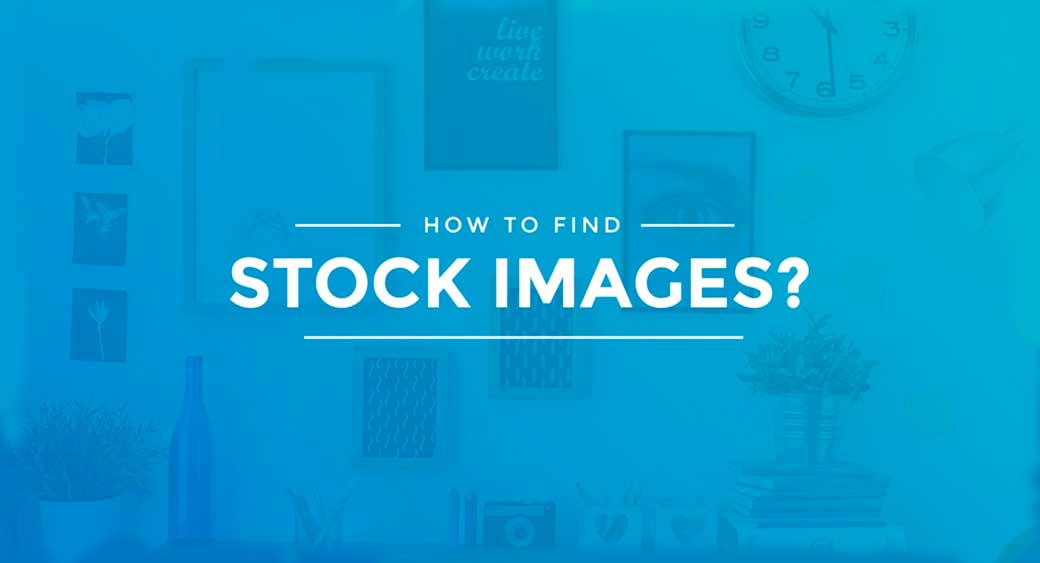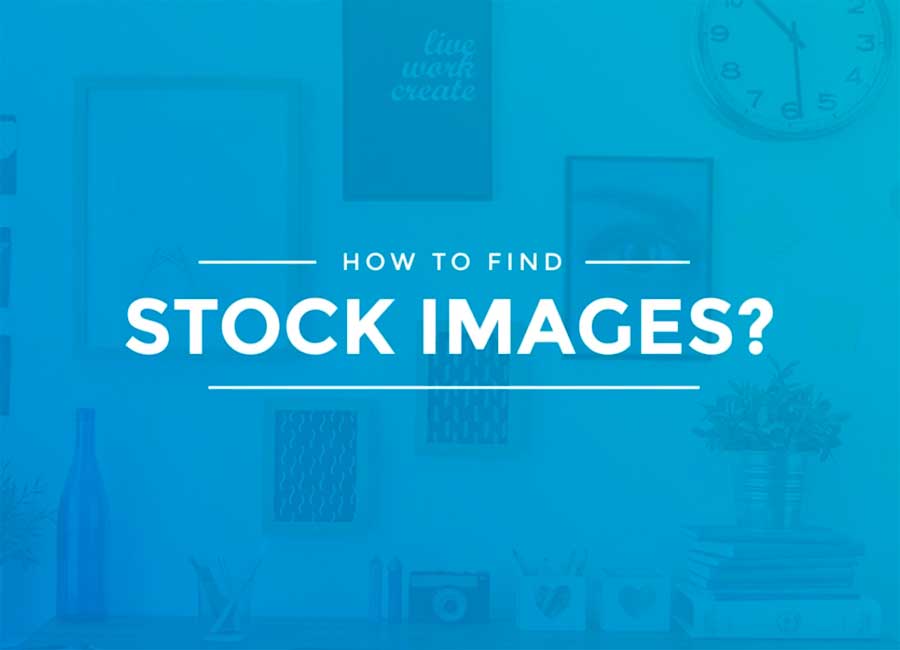Studies reveal that ads and posts with photos will always generate considerably more engagement than the ones without visuals. Approximately 51% of B2B marketers think that doubling the message with a robust and unique image is the recommended recipe for creating successful marketing content. Thus, stock photo search is a required skill for anyone who creates blog posts.

Choosing the Right Stock Photos
With so much relying on a single image, finding the right one is crucial and tricky. The apparent option nowadays would be stock photography, and here’s why:
The variety of visual content that stock photo agencies offer is significantly wider and better than what any business would be capable of producing in-house on its own. Take the equipment, the setting, the models, and their costs, and you’ll realize that stock photos search is cost-effective, handy, and time-saving.
OK, you may have heard that stock photos are staged. They often look fake, cheesy, and cliché. Still, we can assure you that plenty of high-quality, unique images will exceed any customized studio photo you’ll try to produce on your own in terms of both looks and effect. Plus, they’re entirely safe to use, model-released, reviewed, and cleared of copyright. You don’t want lawsuits for your business, so getting you an adequately licensed image is what stock photo agencies do. The royalty-free license you’ll find on most stock photo sites is not only the most common permission to use images, but it is usually the least expensive. For a couple of $, you’ll get the perfect picture for ads and posts.
Stock photos sound peachy; yes, they’ll save your campaign, provided you choose wisely. The worst thing that can happen is seeing the same image for other campaigns, but fortunately, there are millions of content creators and millions of outstanding stock photos. So, concern yourselves with making the right choice rather than not making the same choice. With that said, stock photos can only go so far, and plenty of scenarios aren’t featured on stock websites. Or, maybe you want to feature your own staff in your photos. A corporate events photography company like Splento would come in handy for this purpose.
Step 1: Choose Audience in Stock Photos Search
The image you’re choosing is always meant for an audience. The image should relate to those you target with your product/services, so pay attention to every detail, from the mood, light, and shooting angle to the models’ clothes, ethnicity, the photo’s location, and props. You might think it’s not necessary, but here’s a laughing stock fact, your image should match your business profile.
Do you want the Instagram filter? Will your audience relate to a landscape, a group of people, a mountain, or a puffy pink cloud? Which of these will send the message of my business better? You cannot sell software with a cute blue-eyed cat, so do not confuse your audience with unfortunate or unrelated image choices. Chances are you’ll lose them before they get to what you’re selling.
Step 2: People’s Choice
Snapchat, Instagram, and Facebook have reshaped the world of digital marketing. Snapchat users share 9,000 photos per second, true stories. People want stories, and social media is serving newsfeeds loaded with familiar stories. So what better way to deliver your message than using people’s images? People who are doing stuff: having fun, texting, eating, enjoying nature, taking the dog for walk-just stories.
Try to avoid cheesy, staged photos where people look exaggeratedly emotional in your stock photos search. This type of stock will chase the flock away. You’ll hear this piece of advice over and over again – use snapshot-looking shots of real people doing real stuff in real locations, people like us. Even if these images aren’t perfect, people will relate to what looks authentic, and imperfection is genuine. So even if you decide to choose a photo with an Instagram filter or a photo with regular-looking, casually dressed people, your ad will look less like an advertisement and more like a story.
Step 3: Solid Choices
Stock photography usually means millions and millions of images. It can be time-consuming and meticulous, but we’ve got shortcuts for you not to settle for the best picture you find within initial stock photos search results. We’ve said it before. The worst that can happen is to pick an image used by others over and over again. You must scratch below the surface to uncover hidden gems that help to say what you’re hoping to convey.
Fortunately, most agencies have search tools that allow you to dig deeper, so don’t shy away from using advanced filters. If you like a popular image, then take a couple of seconds and check pictures from the same shooting sessions, the similar images section, or other photos with the same models. There’s no shortage of excellent stock photo search tools and filters. If this does not work, find a favorite photographer or artist, a style, or a category, this will also help you narrow down your stock photos and search for the perfect image.
Step 4: Make a Personal Choice
Stock photography is generic, but this does not mean it is not right for your business. Once you’ve found the right image for your campaign, make it speak for your brand, personalize it, and bring it into the context you want your audience to relate to. It may sound harsh, but it is a matter of a personal touch or, as your designer will put it, retouching. Crop a frame you like, make a color contrast brighter, remove the background, add an item or discard another, and add your message. All these are only a few of the multiple choices you can make to personalize the stock image of your choice.
By making these personal touches, you can take an image that doesn’t initially fit with your brand guidelines and make it a perfect match for your marketing message and your company’s overall values. Not only can adding in-house touches shift a photo to fall in line with your advertising standards, but it can also help to widen your search pool, preventing any unnecessary omissions in your stock photo search for the perfect stock image.
Step 5: Choose a Message
So, you’ve followed the steps above. Now it’s time to choose the marketing message to fit the image. As mentioned, your messaging and pictures must line up. Therefore, don’t rush the slogans, as they may detract from the fantastic stock photos you’ve picked, retouched, and edited to perfection. It’s advisable not to go with a text-heavy overlay when it comes to the image itself. Sometimes all you will need to add is your logo to signify that the message relates to your business.
Remember, this is especially true for social media marketing campaigns. Facebook (who also set the advertising rules for Instagram) implements a 20% text rule on advertising images, so make sure to avoid falling foul of those guidelines. With that in mind, it’s best to let the picture do the talking and avoid detracting from its visual impact by covering it with words. Whether you are printing flyers or running Facebook Ads, it’s a good idea to leave the image as intact as possible before using the space around the image to add persuasive text that speaks to the message of your campaign.
Step 6: Launch Campaign After Stock Photos Search
After you’ve set everything up, it’s time to launch your campaign. But this isn’t a time to sit back and relax. Instead, it’s the moment for you to continually split test and review the data generated from your efforts. It is particularly true within digital marketing. Launch your campaign with different versions of the same image. For instance, try one with a slight blue filter versus one with a red filter. Try a picture with an added vignette or reduced saturation.
After running several A/B tests, you should know which versions of your images perform best in terms of engagement and sales. That’s the moment you can then begin to press the accelerator on your ad spending as you know you’ve found the most effective image for your marketing purposes. All that’s left to do is enjoy the success of your well-chosen imagery!
Wrap Up
With so many stock photos to choose from, picking the correct photo for your marketing campaign is indeed trickier than it ever has been. But where lies a challenge lies an opportunity. By putting in the hard yards during your stock photos search and selection process, you can avoid the cheesy and cliché and instead strike upon visual gold.
Start by thinking about your audience before considering where and how the image is going to appear. What may perform well on social media might be a total flop in a brochure. Look to include people in your photo choices, as they drive up relatability for your target audience, and dig deeper in stock photo libraries by using advanced filters. Next, try to add a personal touch to your images. How are people going to be able to associate a picture with your brand if you don’t put your stamp on it?
Finally, it’s time to incorporate your marketing messages and launch your campaign once you’ve made your image choices. Continuously test, review, and update your campaign to improve the performance and return on investment in your imagery and advertising spend.
